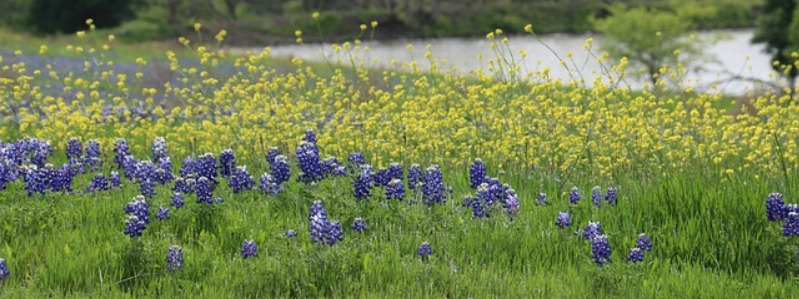Yellow Flowers in Texas
Contents
- Yellow Flowers in Texas
- Acacia farnesiana
- Acmella repens
- Baptisia sphaerocarpa
- Baptisia leucophaea
- Borrichia frutescens
- Chamaecrista fasciculata var. fasciculata
- Chamaecrista nictitans ssp. nictitans
- Coreopsis tinctoria
- Cucumis melo
- Helenium amarum var. amarum
- Helenium flexuosum
- Helianthus angustifolius
- Helianthus annuus
- Hypericum hypericoides ssp. hypericoides
- Ludwigia octovalvis
- Mecardonia procumbens
- Melilotus indicus
- Neptunia pubescens
- Nuphar lutea ssp. advena
- Oenothera drummondii
- Physalis angulata
- Ratibida columnifera
- Rayjacksonia phyllocephala
- Rhynchosia latifolia
- Sarracenia alata
- Schoenolirion croceum
- Senna obtusifolia
- Sesbania drummondii
- Simsia calva
- Vigna luteola
A wildflower is any non-native plant that grows in a natural or wild habitat. Furthermore, any native that blooms in its natural location (other than a garden) is a wildflower. When people use the phrase “wildflower,” they usually refer to herbaceous plants, with the occasional use of a herbaceous plant in a garden setting.
Most of the species employed are native to Texas and the United States but include adaptive plants from other regions. The wildflower program is named because these plants are placed along Texas highways in a natural setting. Several natural plants bloom simultaneously and have established themselves in these “plantings” independently.
Acacia farnesiana
Acacia farnesiana, also known as sweet acacia, needle bush, or huisache, is a small to medium-sized shrub or tree native to the southwestern United States, Texas, Mexico, and Central America. It is a legume family member known for its fragrant yellow flowers and delicate, fern-like leaves.
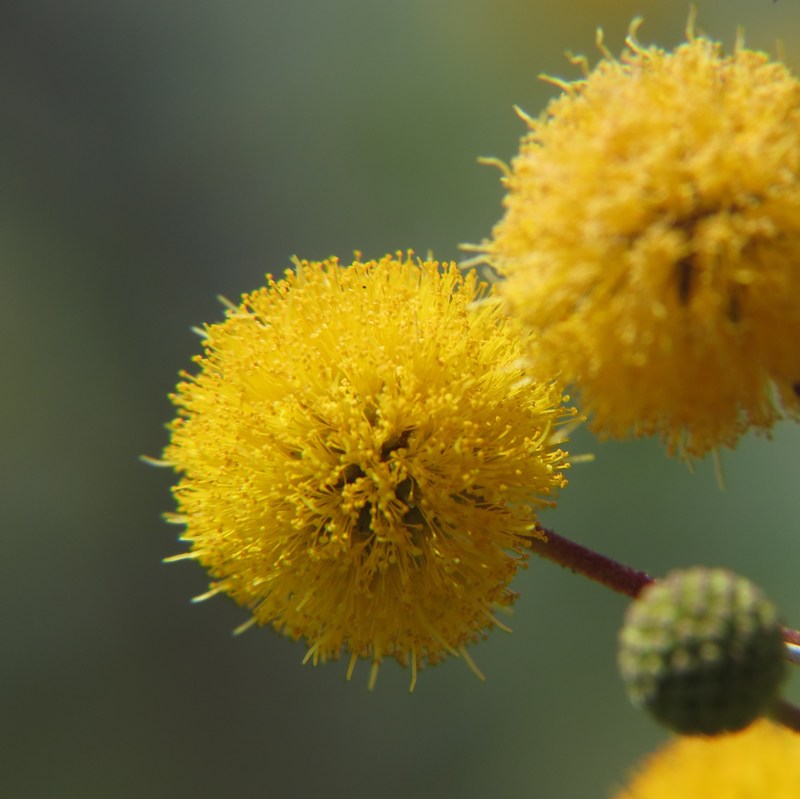
Sweet acacia can grow up to 20 feet tall and 20 feet wide but is often smaller and more compact. The plant is drought-tolerant and prefers well-draining soils, making it well-suited to the arid regions of the Southwest. It is a fast-growing plant and can produce abundant fragrant yellow flowers from winter through early spring.
- Family: Fabaceae
- Common Names: Huisache, Sweet Acacia, Mealy Wattle
- Native to USA: AL, AZ, CA, FL, GA, LA, MS, NM, TX + PR, VI
- Introduced to USA: HI
The flowers of sweet acacia are highly fragrant and attract pollinators such as bees and butterflies. They are also used in perfumes and other fragrances. The plant hosts the larvae of the beautiful yellow and black colored Cassius Blue butterfly.
Acmella repens
Acmella repens is a species known as the creeping toothache plant or Spilanthes oleracea. It is a member of the Asteraceae family and is native to South America, but it is now found in other parts of the world, including Asia and Africa.
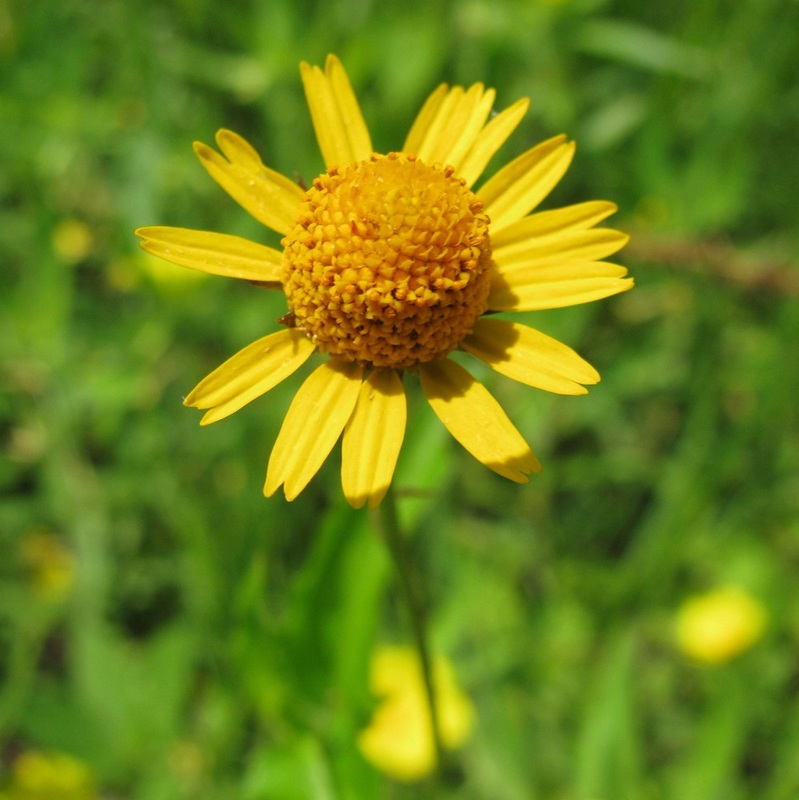
A creeping toothache plant is a small, creeping plant that grows to about 6-10 inches tall. It has small, yellow to red flowers that bloom from spring through fall. The leaves of the plant are small and green, and it is known for its numbing effect on the mouth. The plant has been used in traditional medicine to treat toothache and other mouth and gum problems, hence the common name.
- Family: Asteraceae
- Common Names: Oppositeleaf Spotflower, Opposite-Leaf Spotflower
- Synonyms: Acmella oppositifolia var. repens
Spilanthes americana
Spilanthes americana var. repens - Native to USA: AL, AR, FL, GA, LA, MO, MS, NC, OK, SC, TN, TX
The plant is also used in culinary preparations, particularly in Southeast Asian cuisine, where the leaves and flowers are added to salads and other dishes. It has a unique flavor that is both spicy and slightly numbing, similar to the sensation of a mild electric shock.
Baptisia sphaerocarpa
Baptisia sphaerocarpa, also known as yellow wild indigo, is a perennial plant species in the Fabaceae family. It is native to central and eastern North America and can be found in prairies, meadows, and woodland edges.
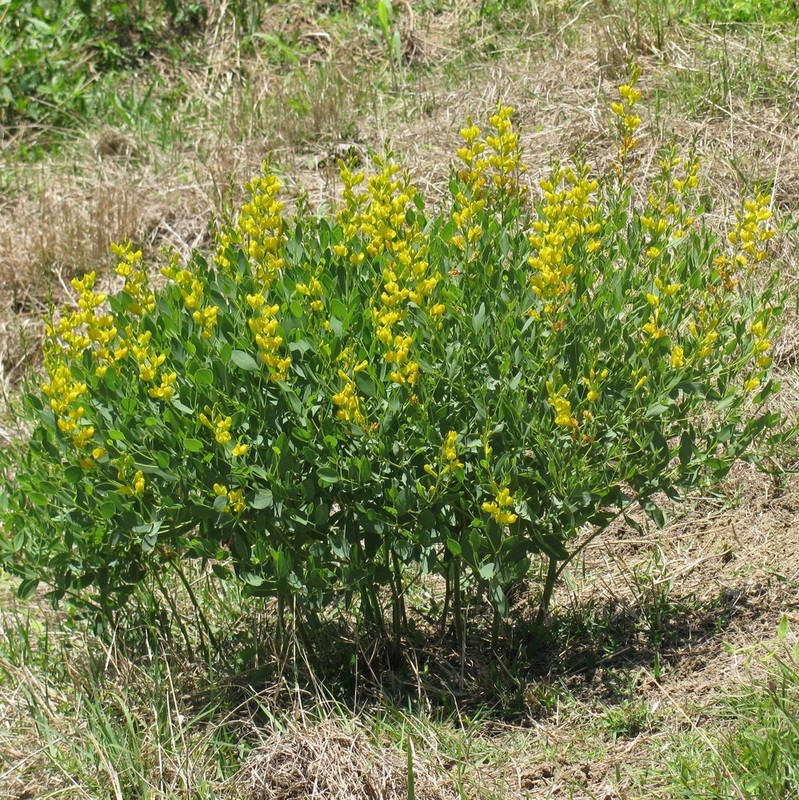
Yellow wild indigo grows up to 3 feet tall and has a bushy, rounded shape with bright green leaves divided into three leaflets. The plant produces clusters of yellow, pea-like flowers in late spring to early summer. The flowers are followed by inflated seed pods that turn brown as they mature.
- Family: Fabaceae
- Common Names: Bush Pea, Green Wild Indigo, Yellow Wild Indigo, Yellow Wisteria
- Native to USA: AR, LA, MO, MS, OK, TX
Baptisia sphaerocarpa has several uses, both ornamental and medicinal. Landscaping is valued for its attractive foliage and showy flowers, which attract pollinators like bees and butterflies. It is also tolerant of drought and poor soil, making it a popular choice for xeriscaping and other low-maintenance landscaping projects.
Baptisia leucophaea
Baptisia leucophaea, commonly known as white wild indigo, is a flowering plant in the Fabaceae family. It is native to the central United States, including Illinois, Missouri, and Arkansas.

The plant has tall, erect stems that grow up to 3 feet (1 meter) tall, and it produces clusters of white or cream-colored flowers that bloom in late spring and early summer. The flowers are pea-shaped and are followed by seed pods that turn from green to black as they mature. The leaves of the plant are bluish-green and are composed of three leaflets.
- Family: Fabaceae
- Common Names: Longbract Wild Indigo, Large-bracted Wild Indigo, False Indigo, Plains Wild Indigo, Cream False Indigo, Cream Wild Indigo
- Synonyms: Baptisia bracteata varl. laevicaulis, Baptisia laevicaulis, Baptisia cuneata, Baptisia leucophaea var. laevicaulis, Baptisia bracteata var. leucophaea, Baptisia bracteata var. glabrescens, Baptisia bushii
- Native to USA: AR, IA, IL, IN, KS, KY, LA, MA, MI, MN, MO, MS, NE, NJ, OK, SD, TN, TX, WI
White wild indigo is often used in prairie or meadow gardens, where it can be planted with other native wildflowers and grasses. It prefers well-drained soils and full sun to partial shade. The plant is also drought-tolerant and can handle a range of soil types.
Borrichia frutescens
Borrichia frutescens is a species of flowering plant in the family Asteraceae. Commonly known as bushy seaside tansy, it is a perennial shrub that is native to coastal areas of the southeastern United States, including Florida, Georgia, and the Gulf Coast states.

The plant has succulent, leathery leaves and produces clusters of small, yellow flowers that bloom from late spring through summer. It grows up to 5 feet (1.5 meters) tall and 6 feet (1.8 meters) wide, and has a sprawling, mounding growth habit. The leaves and stems of the plant contain salt glands, which allow it to tolerate high levels of salt in the soil and air.
- Family: Asteracea
- Common Names: Bushy Seaside Tansy
- Native to USA: AL, FL, GA, LA, MD, MS, NC, SC, TX, VA
Bushy seaside tansy is often used in coastal gardens, where it can be planted as a ground cover or in mass plantings. It prefers full sun and well-drained soils and is drought-tolerant once established.
Chamaecrista fasciculata var. fasciculata
Chamaecrista fasciculata var. fasciculata, commonly known as partridge pea, is a native North American plant that belongs to the family Fabaceae. It is found throughout most of the eastern United States and is particularly common in the southeastern region.
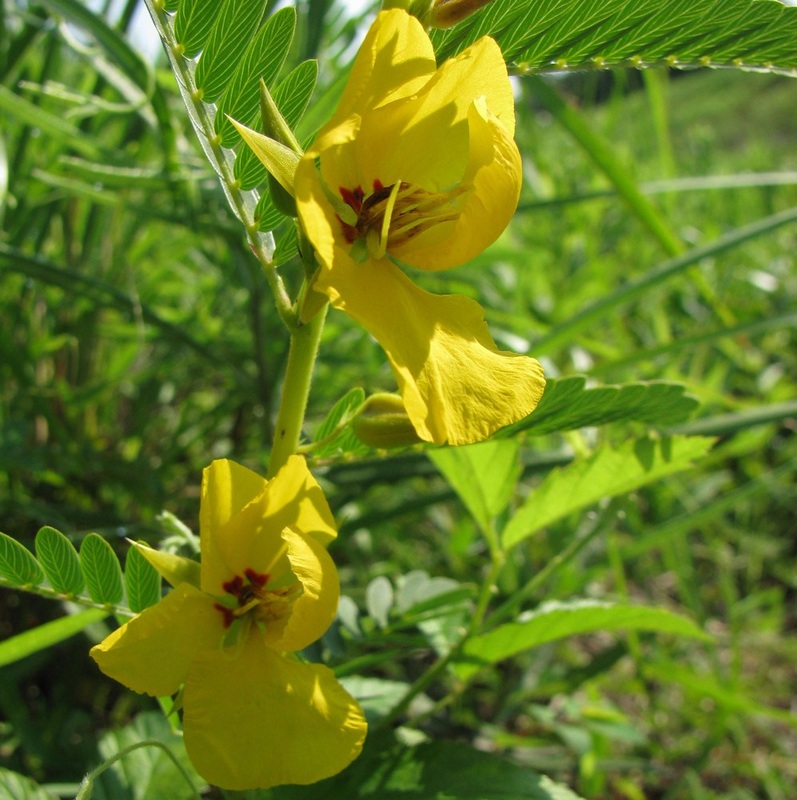
Partridge pea is an herbaceous annual or short-lived perennial that grows up to 3 feet (0.9 meters) tall. It has pinnately compound leaves that are divided into numerous small, oval-shaped leaflets. The plant produces bright yellow, pea-like flowers that bloom from mid-summer to fall. The flowers are followed by flattened, brown seed pods that contain numerous small seeds.
- Family: Fabaceae
- Common Names: Partridge Pea, Showy Partridge-pea, Beeflower
- Native to USA: AL, AR, CT, DC, DE, FL, GA, IA, IL, IN, KS, KY, LA, MA, MD, MI, MN, MO, MS, NC, NE, NJ, NM, NY, OH, OK, PA, RI, SC, SD, TN, TX, VA, WI, WV
Partridge pea is often used in wildflower meadows or as a naturalizing plant in open areas. It is an easy-to-grow plant that prefers full sun and well-drained soils and is tolerant of drought and heat once established. It is also good for erosion control and soil stabilization in disturbed areas.
Chamaecrista nictitans ssp. nictitans
Sensitive partridge pea grows up to 2 feet (0.6 meters) tall and has pinnately compound leaves divided into numerous small leaflets. The plant produces clusters of bright yellow flowers with five petals that bloom from summer to fall. Each flower lasts only a day and is sensitive to touch, closing its petals in response to being touched or disturbed.
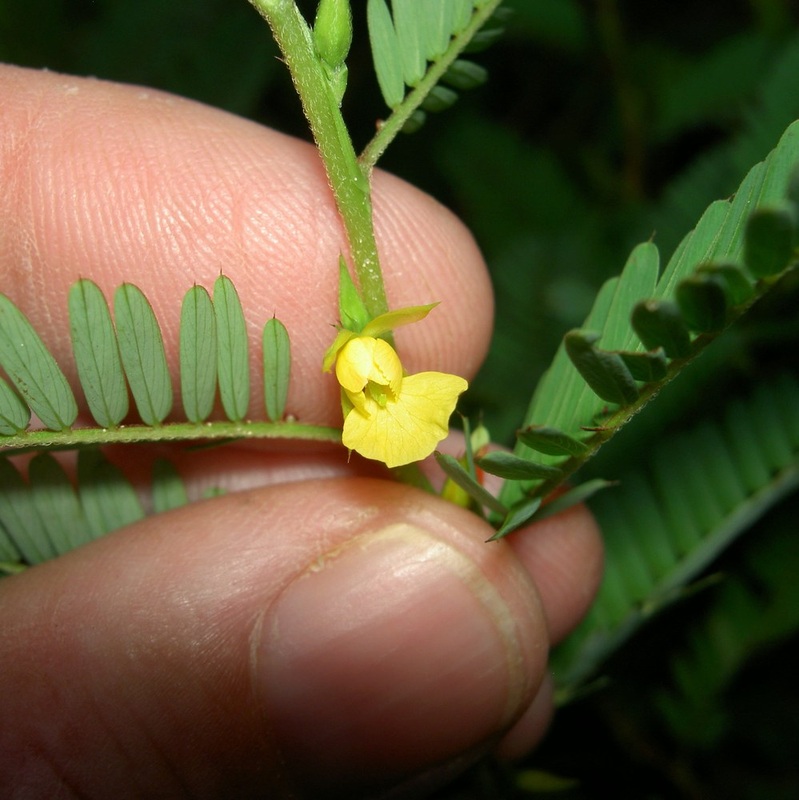
The plant is named for this sensitive response, which is thought to help protect the plant from herbivores. The seed pods that follow the flowers are flattened and contain numerous small, oval-shaped seeds that are an important food source for birds and small mammals.
- Family: Fabaceae
- Common Names: Partridge Pea, Sensitive Partridge Pea
- Native to USA: AL, AR, AZ, CT, DC, DE, FL, GA, IL, IN, KS, KY, LA, MA, MD, ME, MI, MO, MS, NC, NH, NJ, NM, NY, OH, OK, PA, RI, SC TN, TX, VA, VT, WI, WV + PR, VI
- Introduced to USA: HI
Sensitive partridge pea is often used in landscaping as a ground cover, in wildflower meadows, or as a naturalizing plant in open areas. It is an easy-to-grow plant that prefers full sun and well-drained soils and is tolerant of drought and heat once established. It is also suitable for erosion control and soil stabilization in disturbed areas.
Coreopsis tinctoria
Coreopsis tinctoria, commonly known as plains coreopsis, golden tickseed, or calliopsis, is an annual flowering plant that belongs to the family Asteraceae. It is native to the central and southern regions of North America and is commonly found in fields, meadows, and roadsides.
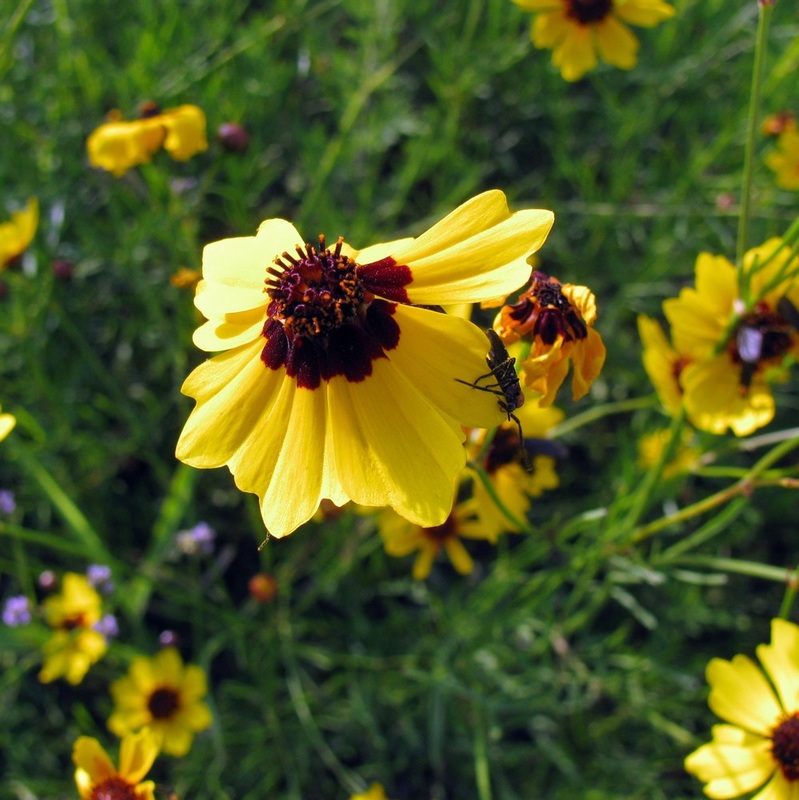
The plant grows up to 3 feet (0.9 meters) tall and produces numerous yellow or orange-red flowers with a dark center that blooms from late spring to early summer. The flowers are attractive to bees, butterflies, and other pollinators.
- Family: Asteraceae
- Common Names: Plains Coreopsis, Golden Tickseed, Golden Wave, Calliopsis
- Native to USA: AL, AR, AZ, CA, CO, CT, DC, DE, FL, GA, IA, ID, IL, IN, KS, KY, LA, MA, MD, ME, MI, MN, MO, MS, MT, NC, ND, NE, NJ, NM, NY, OH, OK, OR, PA, RI, SC, SD, TN, TX, VA, VT, WA, WI, WV ,WY
- Native to CAN: AB, BC ,MB, ON, QC, SK
- Introduce to USA: HI
Plains coreopsis is easy to grow and care for and popular for wildflower gardens and naturalized landscapes. It prefers full sun and well-drained soils and tolerates drought and heat once established. The plant self-seeds readily and can become invasive in some areas, so it is important to monitor its growth and remove any excess seedlings.
Cucumis melo
Cucumis melo, commonly known as muskmelon or cantaloupe, is a melon species belonging to the Cucurbitaceae family. It is believed to have originated in Africa and the Middle East and has been cultivated for thousands of years.
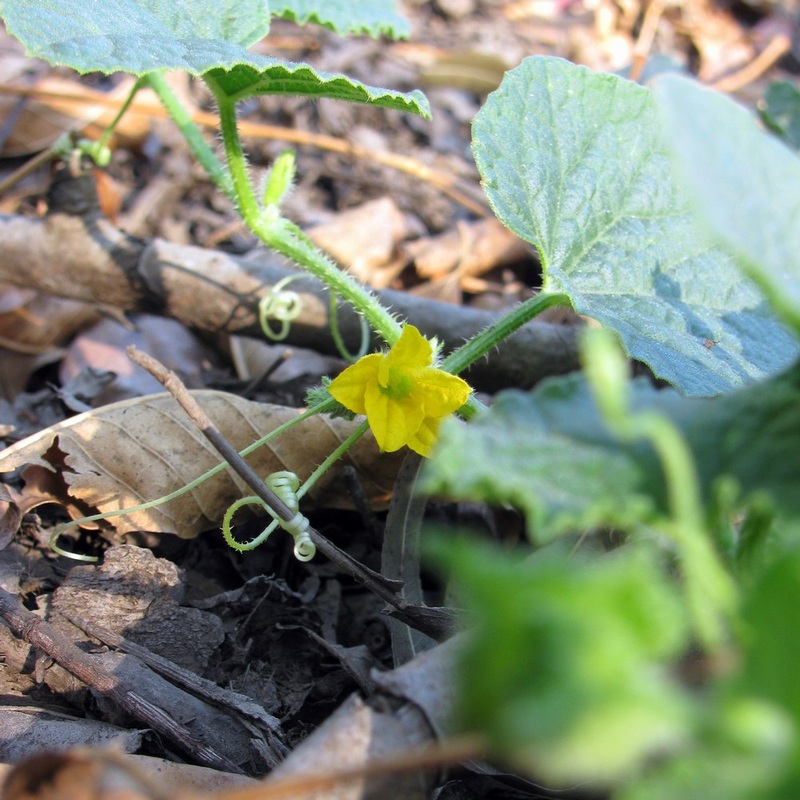
Muskmelons are grown for their sweet and juicy flesh, ranging from light green to orange. They are typically round or oval in shape and have a rough outer rind covered in a net-like pattern. The flesh is usually eaten fresh, either on its own or as part of a fruit salad.
- Family: Cucurbitaceae
- Common Names: Cantaloupe, Cantalope
- Introduced to USA: AL, AR, CA, CT, FL, GA, IL, KS, KY, LA, MA, MI, MO, MS, NC, NH, NM, NV, NY, OH, OK, PA, RI, SC, TX, UT ,VA, WI, WV + PR
- Introduced, to CAN: ON
Muskmelons are a warm-season crop that can be grown in various soil types, but they prefer well-drained soils rich in organic matter. They require plenty of sunlight and water, especially during the fruiting stage. Muskmelons can be grown in home gardens and commercial farms, and there are several varieties to choose from, each with its unique flavor and texture.
Helenium amarum var. amarum
Helenium amarum var. amarum, also known as bitter sneezeweed or yellowdicks, is a perennial plant in the Asteraceae family that is native to the southeastern United States. It typically grows in open, sunny areas such as meadows, prairies, and along roadsides.
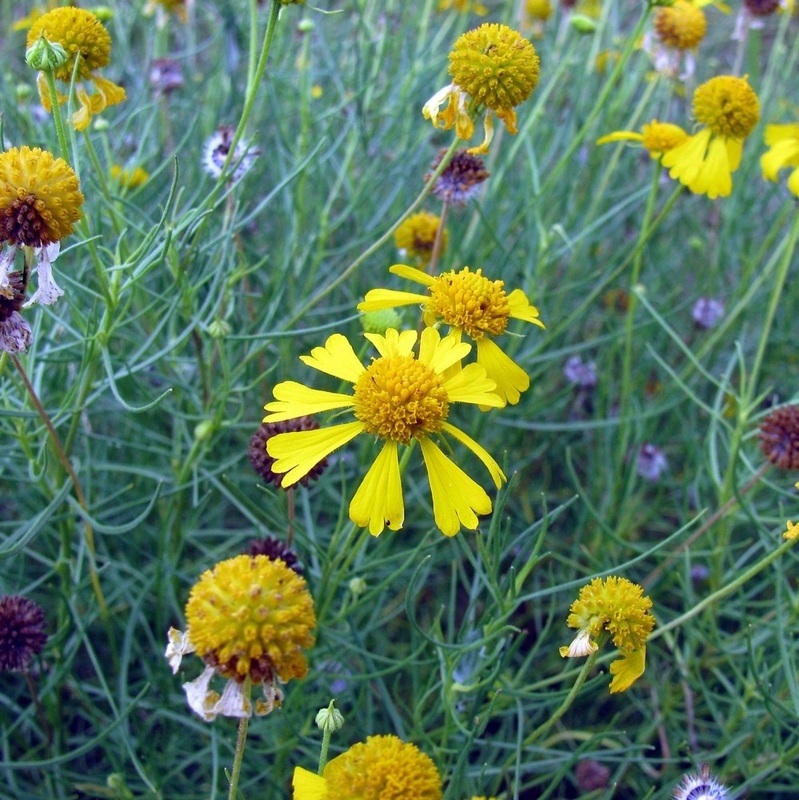
The plant produces yellow, daisy-like flowers that bloom in the summer and fall. The flowers have a prominent central disk surrounded by yellow petals sometimes tinged with red or brown. The plant has long, slender leaves that are green or gray-green.
- Family: Asteraceae
- Common Names: Yellow Dicks, Yellow Bitterweed, Sneezeweed
- Native to USA: AL, AR, CA, CT, FL, GA, IA, IL, IN, KS, KY, LA, MA, MD, MI, MO, MS, NC, NE, OH, OK, PA, SC, TN, TX, VA, WI
Bitter sneezeweed is a hardy plant that can grow in various soil types, although it prefers well-drained soils rich in organic matter. It is tolerant of drought and can grow in full sun to partial shade. The plant can also tolerate moderate to heavy grazing by livestock, making it a good option for naturalized pastures.
Helenium flexuosum
Helenium flexuosum, commonly known as purplehead sneezeweed, is a perennial herbaceous plant in the Asteraceae family. It is native to the southeastern United States, growing in wetlands and along stream banks.
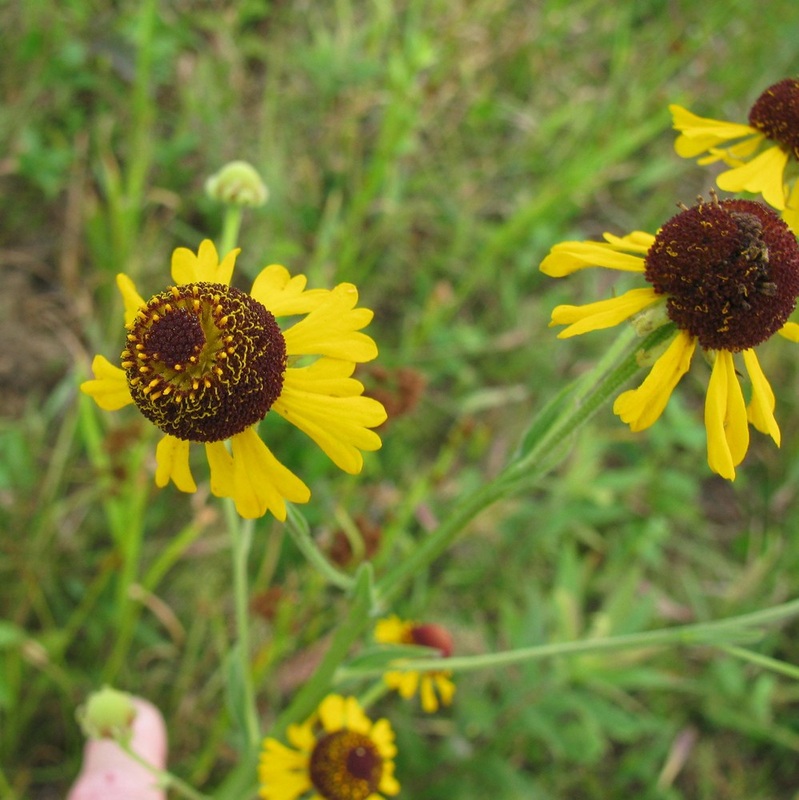
The plant produces clusters of small, purple, or maroon flowers with yellow centers in late summer and early fall. The flowers are arranged in branching, corymb-like inflorescences that can reach up to 3 feet in height. The leaves are long and narrow, with a slightly hairy texture.
- Family: Asteraceae
- Common Names: Purplehead Sneezeweed, Purple-head Sneezeweed
Native to USA: AL, AR, CT, DC, DE, FL, GA, IL, IN, KS, KY, LA, MA, MD, ME, MI, MN, MO, MS, NC, NH, NJ, OH, OK, PA, RI, SC, TN, TX, VA, VT, WI, WV - Introduced to CAN: NS, ON, QC
Helenium flexuosum is known for its ornamental value in wildflower gardens and naturalized areas. It prefers moist to wet soils and can tolerate flooding. The plant can also grow in upland areas but requires consistent moisture.
Helianthus angustifolius
Helianthus angustifolius, also known as swamp sunflower, is a tall, native perennial plant in the sunflower family, Asteraceae. It is typically found in marshes, wetlands, and along the edges of streams and ponds in the southeastern United States.
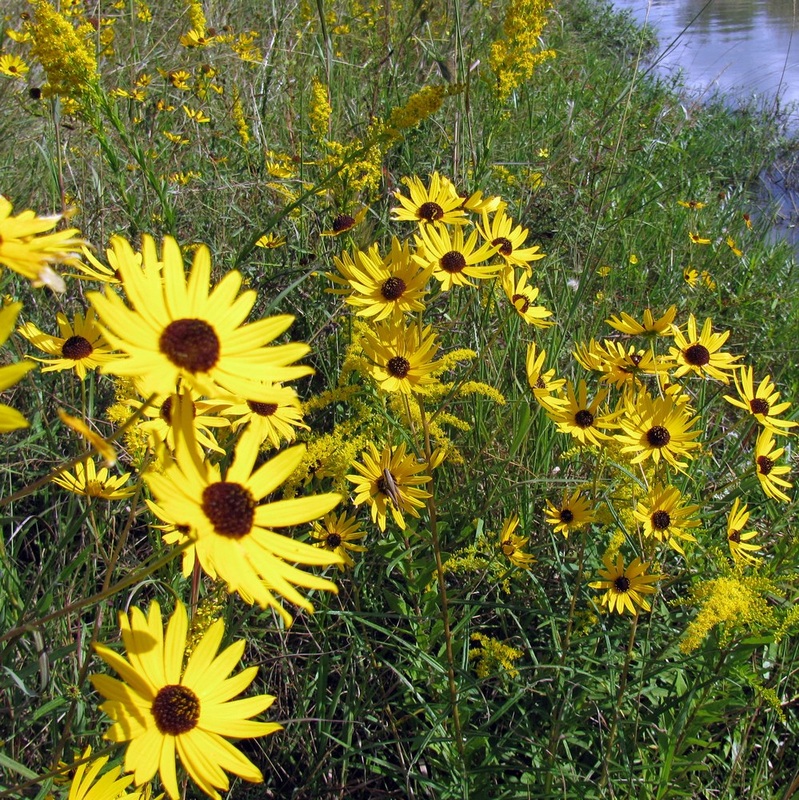
Swamp sunflower typically grows 5 to 8 feet tall, with bright yellow flowers that can be up to 3 inches in diameter. The leaves are narrow and lance-shaped, growing up to 8 inches long. The plant blooms in the fall, providing a burst of color in the late season.
- Family: Asteracea
- Common Names: Swamp Sunflower
- Native to USA: AL, AR, DC, DE, FL, GA, IL, IN, KY, LA, MD, MO, MS, NC, NJ, NY, OH, OK, PA, SC, TN, TX, VA, WV
Swamp sunflower is a popular ornamental plant in wetland gardens and naturalized areas. It is attractive to butterflies and bees, providing nectar and pollen. The plant is also a host for the Silvery Checkerspot butterfly, which lays its eggs on the leaves.
Helianthus annuus
Helianthus annuus, the common sunflower, is a large annual plant in the Asteraceae family. It is native to North America but has been widely cultivated as a crop plant worldwide.
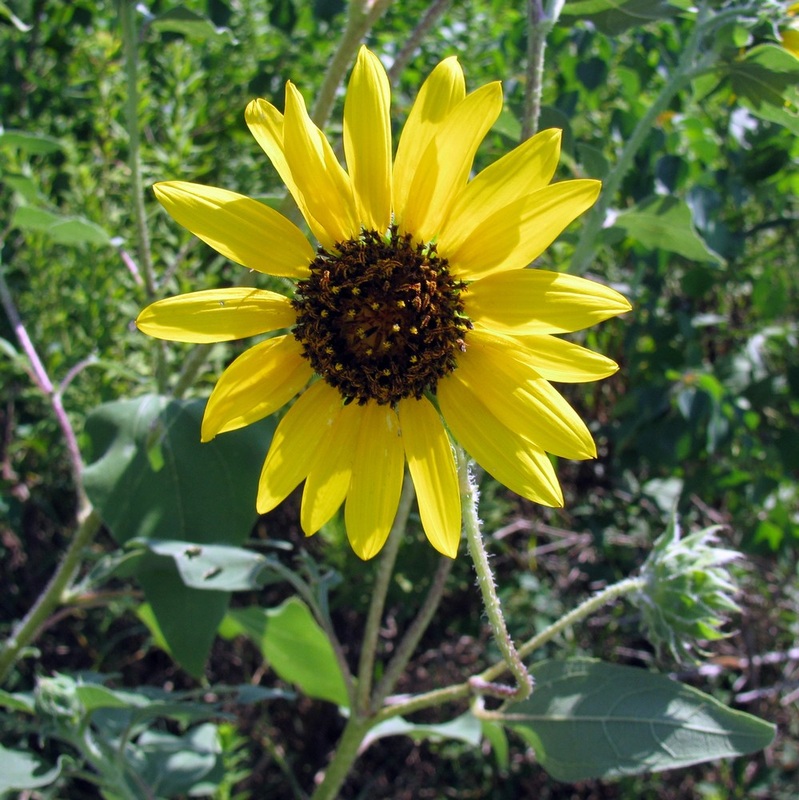
The plant typically grows to a height of 5-12 feet, with a stout, hairy stem and broad, ovate leaves. The large, showy flowers can reach up to 12 inches in diameter, with yellow petals and a dark brown central disk that contains hundreds of tiny individual flowers.
- Family: Asteraceae
- Common Names: Common Sunflower
- Native to USA: 48 Continental States + DC
- Introduced to USA: AK, HI + PR
- Introduced to CAN: AB, BC, MB, NB, NS, NT, ON, PE, QC SK
- Introduced to FRA: SPM
Sunflowers are grown commercially for their edible seeds, which are used to produce cooking oil, snacks, and bird feed. The flowers are also popular ornamental plants, grown for their cheerful appearance and the way they attract bees, butterflies, and other pollinators to the garden.
Hypericum hypericoides ssp. hypericoides
St. Andrew’s Cross, also known as Hypericum hypericoides, is a small, woody shrub in the family Hypericaceae, native to the southeastern United States, including Texas. It is named after the diagonal, X-shaped pattern that its branches form, which resembles the cross of St. Andrew, the patron saint of Scotland.
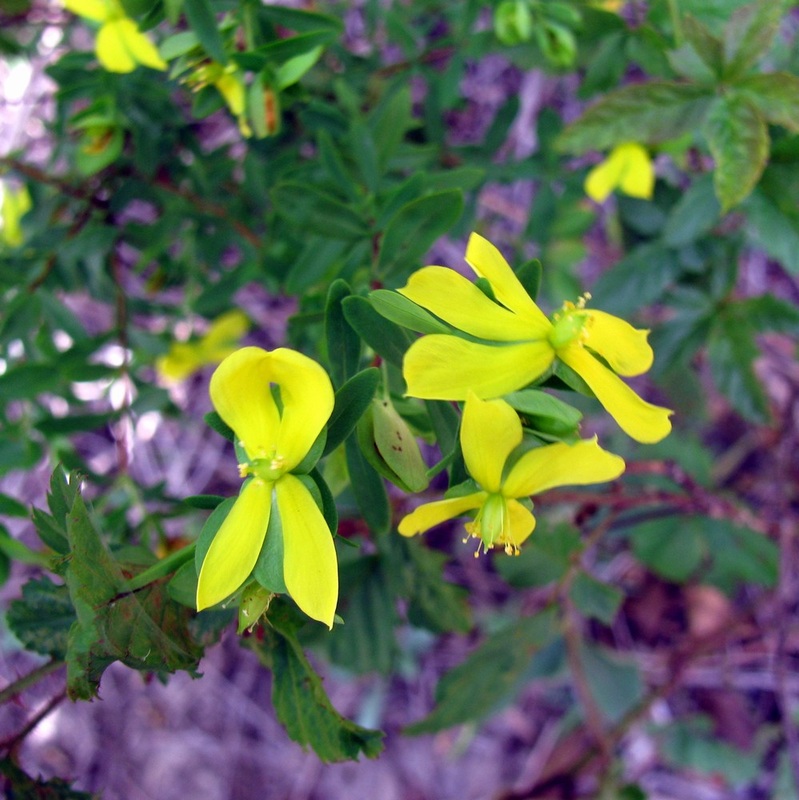
St. Andrew’s Cross typically grows to a height of 2 to 3 feet and has slender, green stems that bear narrow, oblong leaves. In summer, it produces clusters of bright yellow, five-petaled flowers about an inch in diameter. The plant prefers moist, well-drained soils and partial shade, although it can tolerate full sun in cooler climates.
- Family: Clusiaceae
- Common Names: St. Andrew’s Cross
- Native to USA: AL, AR, DE, FL, GA, IL, KY, LA, MD, MO, MS, NC, NJ, OK, SC, TN, TX, VA, + PR
Ludwigia octovalvis
Mexican Primrose-willow, also known as Ludwigia octovalvis, is a perennial herbaceous plant in the evening primrose family (Onagraceae) that is native to Mexico, Central America, and parts of South America. It has also been introduced to many parts of the world, including the southern United States, where it has become naturalized in some areas.
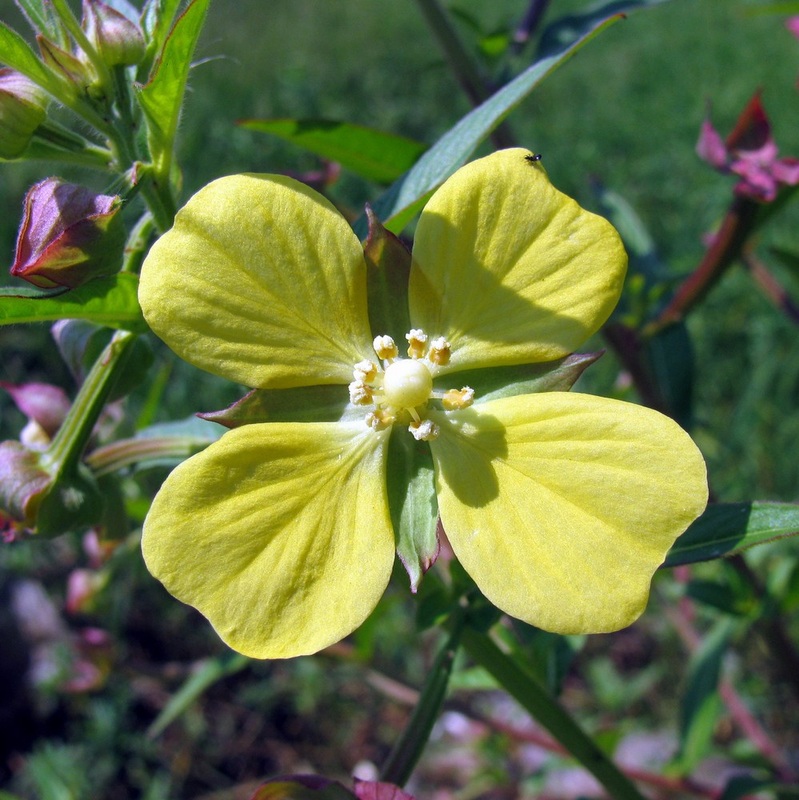
Mexican Primrose-willow typically grows to a height of 1 to 3 feet and has lance-shaped leaves up to 3 inches long. The plant produces small, bright yellow flowers with four petals that are less than half an inch in diameter. The flowers are followed by elongated capsules that contain many tiny seeds. Mexican Primrose-willow prefers wet soils and is often found growing along the edges of lakes, ponds, and streams.
- Family: Onagraceae
- Common Names: Mexican Primrose-willow
- Native to USA: AL, FL, GA, HI, LA, NC, TX, + PR, VI
Mexican Primrose-willow is used as an ornamental plant in gardens and landscapes, particularly in moist soil or near water features. It can be grown from seed or by rooting stem cuttings, and it is a relatively low-maintenance plant that can provide bright yellow flowers throughout the growing season.
Mecardonia procumbens
Baby Jump-up (Mecardonia procumbens) is a low-growing, spreading annual plant native to southern and eastern parts of the United States, including Texas. It belongs to the Plantaginaceae family and is known by several common names, including creeping mecandonia, baby jump-up, and wandering mecandonia.
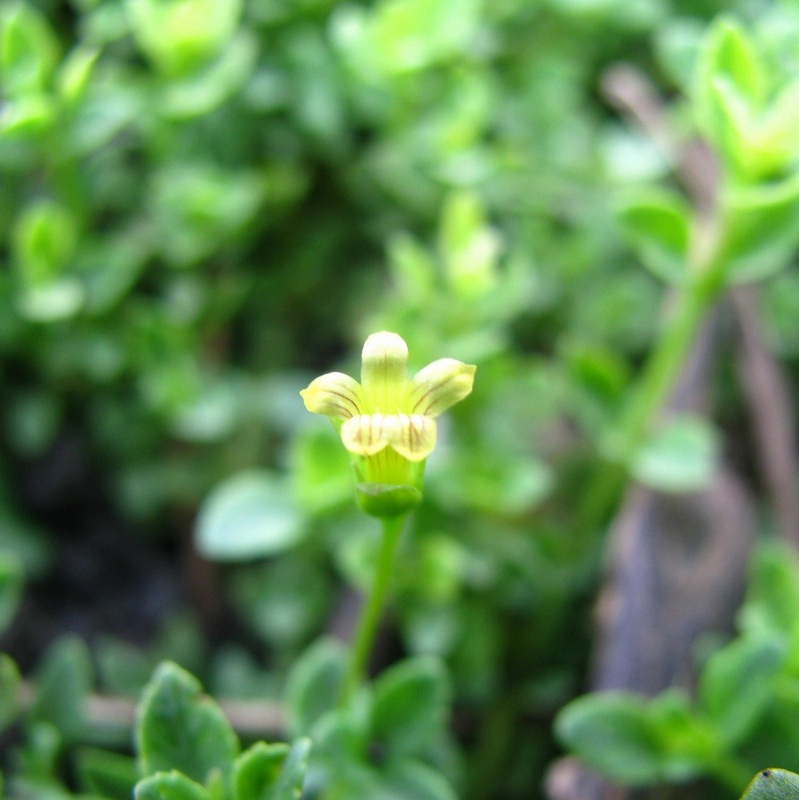
The plant produces bright yellow flowers that have five petals, with a yellow center. The leaves are small and oval-shaped, and the stems are green, slender, and trailing. Baby Jump-up prefers full sun or partial shade and well-drained soil. It can grow up to 8 inches tall and 24 inches wide.
- Family: Scrophulariaceae
- Common Names: Baby Jump-up
- Native to USA: AL, AZ, FL, LA, NM, TX, + PR, VI
Baby Jump-up is a popular plant for rock gardens, borders, and container gardens, and it can attract butterflies and other pollinators. It is easy to care for and requires little maintenance, making it an excellent choice for gardeners of all skill levels.
Melilotus indicus
Annual Yellow Sweetclover (Melilotus indicus) is an annual herbaceous plant native to Asia but is now found in many parts of the world, including Texas. It belongs to the Fabaceae family and is known by other common names, including Annual Sweetclover and Sour Clover.
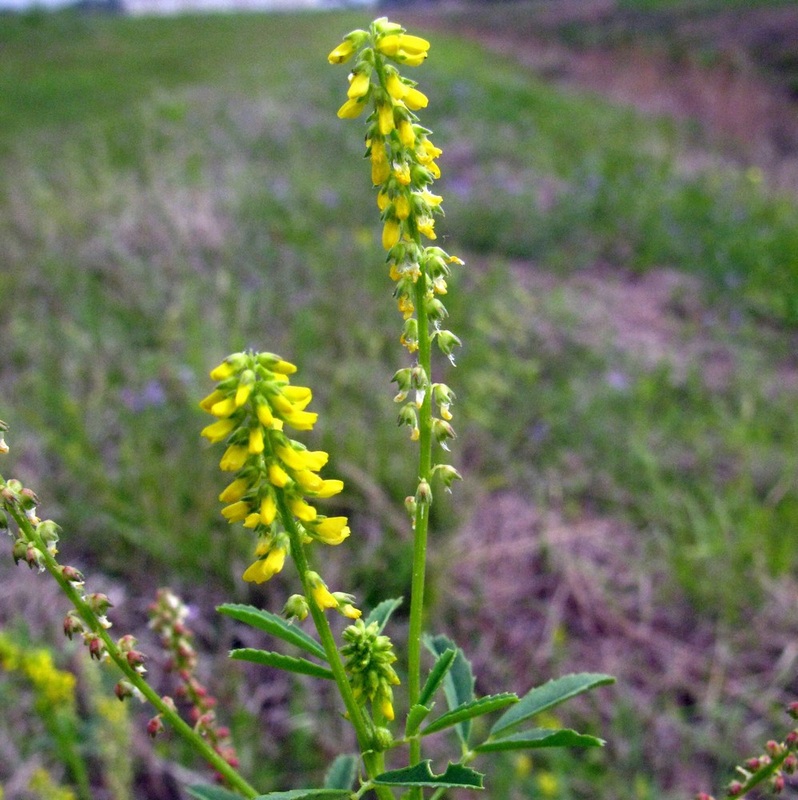
The plant typically grows about 1 to 3 feet tall and has a deep taproot that can reach down several feet into the soil. The leaves are alternate and trifoliate, and the flowers are small and yellow, produced in dense clusters on the ends of the stems. The plant produces small, round seed pods that are brown and hard.
- Family: Fabaceae
- Common Names: Annual Yellow Sweetclover
- Introduced to USA: AL, AR, AZ, CA, DE, FL, GA, HI, ID, KY, LA, MA, ME, MN, MS, NC, NH, NJ, NM, NV, NY, OK, OR, PA, SC, TX, UT, VA VT, WA, WI
- Introduced to CAN: BC, MB, NS
- Introduced to DEN: GL
Annual Yellow Sweetclover is often grown as a cover crop in agricultural fields and can help to fix nitrogen in the soil. It is also used for erosion control and as a forage crop for livestock. The plant has a sweet, pleasant smell and can be used in herbal teas and as a flavoring food agent. It is important to note that the plant contains coumarin, which can be toxic in high doses and should be used cautiously.
Neptunia pubescens
Neptunia pubescens is a species of legume native to the southern United States, including Texas and parts of Mexico, Central America, and South America. It is commonly known as the “sensitive plant” or “tropical puff.” It is a small, low-growing plant that typically reaches heights of 1-2 feet. The plant gets its name from its sensitive leaves, which fold inward or droop when touched or subjected to vibration.
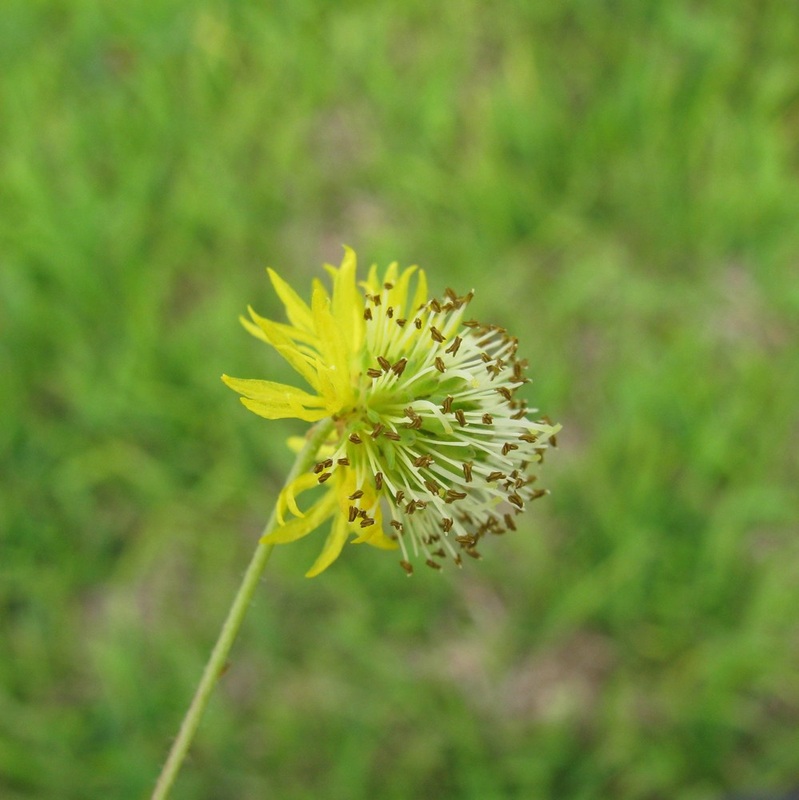
Neptunia pubescens grows best in moist soils, commonly found in floodplain forests, along riverbanks, and wetlands. It is often used as a ground cover or ornamental plant in landscaping. The plant’s flowers are small and yellow and are arranged in small clusters along the stem. The flowers are followed by small, flattened pods containing several small, black seeds.
- Family: Fabaceae
- Common Names: Tropical Puff
- Native to USA: AL, FL, LA, MS, TX
Nuphar lutea ssp. advena
Common spatterdock, also known as yellow water lily or cow lily, is an aquatic plant species that are native to many parts of North America, including Texas. It belongs to the genus Nuphar and the family Nymphaeaceae.
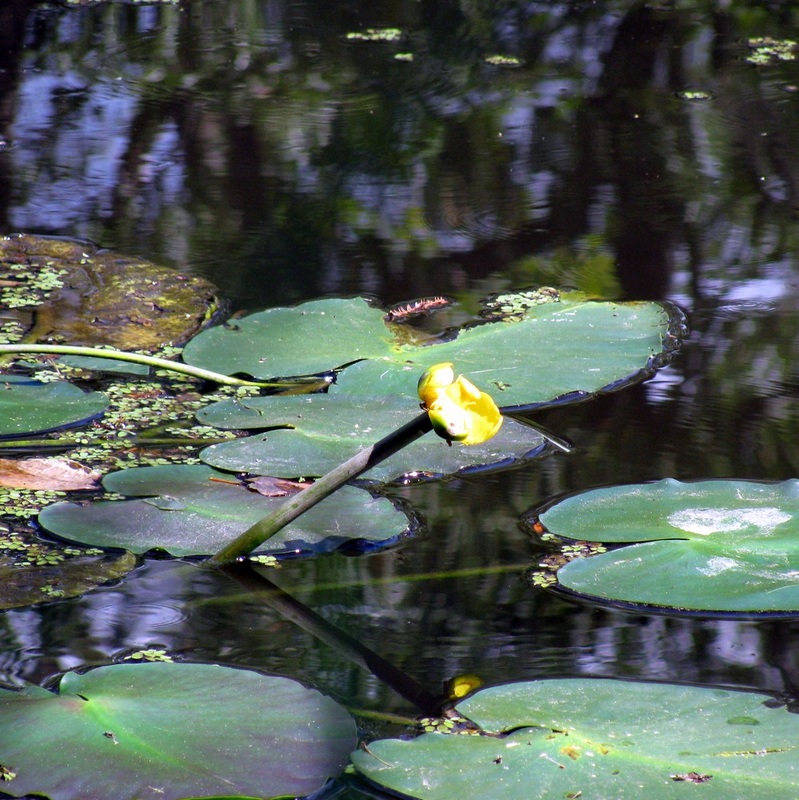
Common spatterdock has broad, round leaves that float on the water surface and yellow flowers that rise above the leaves on tall stalks. The flowers are large and showy, and they produce many seeds dispersed by water currents.
- Family: Nymphaeaceae
- Common Names: Common Spatterdock, Yellow Cow Lily, Yellow Pond Lily, Spatterdock
- Native to USA: AL, AR, CT, DC, DE, FL, GA, IL, KS, KY, LA, MA MD, ME, MI, MN, MO, MS, NC, NH, NJ, NY, OH, OK, PA,SC, TN, TX, VA, VT, WI, WV
- Native to CAN: ON
In Texas, common spatterdock can be found in ponds, lakes, and slow-moving streams throughout the state. It is a hardy plant that can tolerate a wide range of water conditions, from stagnant to flowing and from clear to murky. Common spatterdock is a beneficial plant for aquatic ecosystems and is often used in wetland restoration and management projects.
Oenothera drummondii
Beach evening primrose, also known as dune primrose, is a perennial wildflower that is native to the coastal regions of the southwestern United States and northern Mexico. It grows in sandy or gravelly soils in dunes, beach bluffs, and rocky coastal slopes.
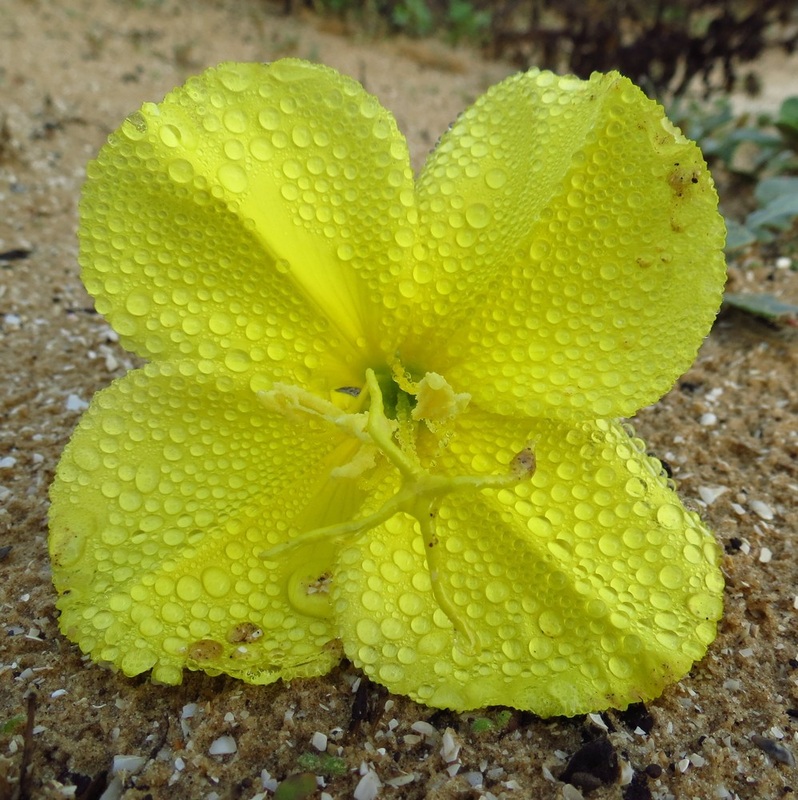
Beach evening primrose is a low-growing plant that forms a sprawling mat of leaves and stems. The leaves are typically gray-green and are coated with fine hairs that help protect the plant from salt spray and wind. The flowers of the beach evening primrose are large, showy, and brightly colored, ranging from yellow to pink to white. They open in the late afternoon or evening and close in the morning.
- Family: Onagraceae
- Common Names: Beach Evening Primrose
- Native to USA: FL, LA, NC, SC, TX
Beach evening primrose is adapted to harsh coastal environments, including salt spray, wind, and drought. It is an important plant for stabilizing dunes and providing a habitat for various wildlife, including insects, birds, and small mammals. The plant is also sometimes cultivated for use in landscaping and erosion control.
Physalis angulata
Cutleaf groundcherry, also known as Cutleaf husk tomato (Physalis angulata), is a plant species in the nightshade family Solanaceae, native to the Americas. It grows in many parts of the world and is considered an invasive weed in some areas.
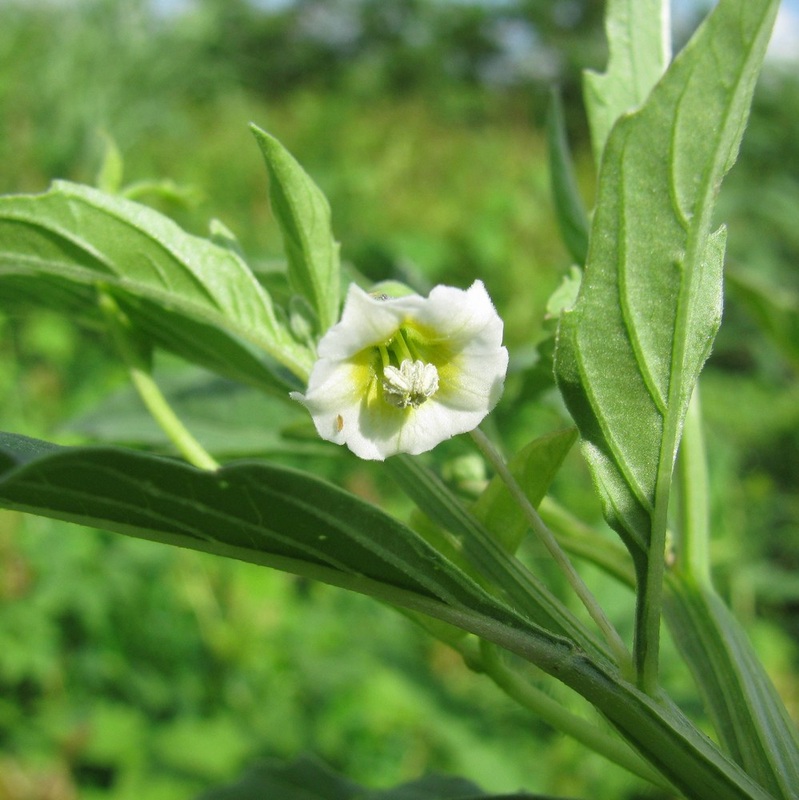
The plant grows as an annual or short-lived perennial, reaching up to 1 m in height. It has a central stem and numerous branches, with green or purplish leaves that are deeply cut or lobed. The plant produces small, star-shaped yellow flowers that are followed by round, yellow, or orange fruits that are about 1 cm in diameter and enclosed in a papery husk.
- Family: Solanaceae
- Common Names: Cutleaf Groundcherry
- Native to USA: AL, AR, AZ, CA, CT, DE, FL, GA, IL, KS, KY, LA, MA, MO, MS, NC, NJ, NM, NV, OK, SC, TN, TX, VA, +PR, VI
- Introduced to USA: HI
Cutleaf groundcherry is considered a weed in some areas, as it can spread quickly and become invasive. It is often found in disturbed habitats, such as roadsides, pastures, and waste areas. However, the plant is also valued for its ornamental value and is grown as an attractive garden plant in some areas.
Ratibida columnifera
Mexican hat (Ratibida columnifera) is a plant species native to Texas and other North America. It is a sunflower family member and is also commonly known as upright prairie coneflower or prairie coneflower. The plant typically grows to a height of 1 to 3 feet and produces yellow, red, or brownish-red daisy-like flowers with drooping petals and a cone-shaped central disk. The flowers bloom in late spring or early summer and attract bees, butterflies, and other pollinators.
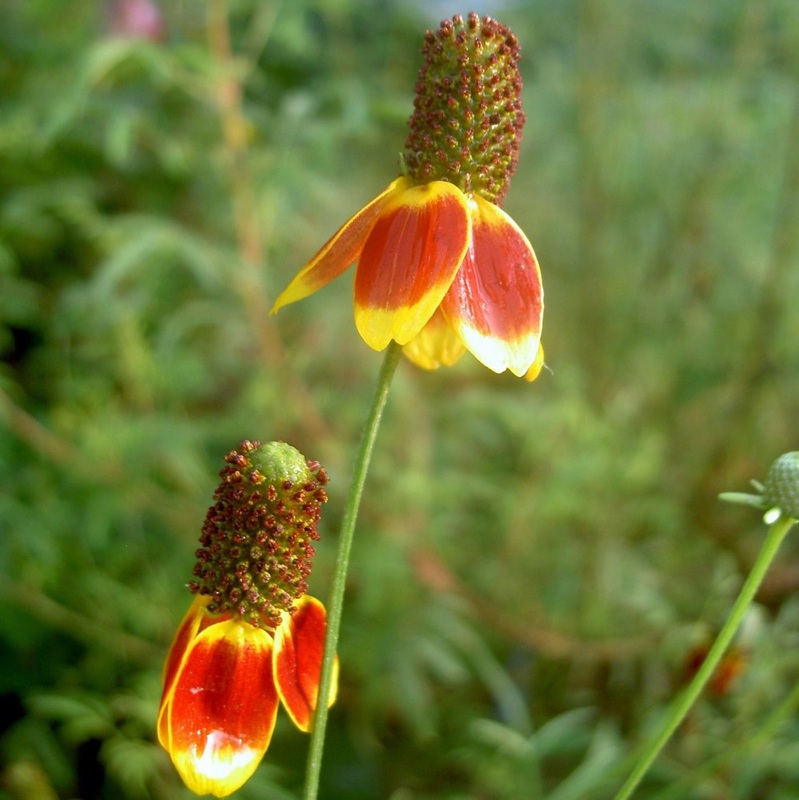
Mexican hat is a hardy and drought-tolerant plant that can thrive in various soil types, from sandy to clay. It is commonly found in prairies, meadows, roadsides, and other disturbed areas. The plant has a long history of use by Native Americans, who used it for a variety of medicinal and practical purposes. Today,
- Family: Asteracea
- Common Names: Mexican Hat, Prairie Coneflower, Upright Prairie Coneflower, Red-spike Mexican hat, Long-headed Coneflower, Thimbleflower
- Native to USA: AL, AR, AZ, CA, CO, CT, FL, GA, IA, ID, IL, IN, KS, LA, MA, MI, MN, MO, MS, MT, NC, ND, NE, NJ, NM, NY, OH, OK, PA, SC, SD, TN, TX, UT, WI, WV, WY
- Native to Can: AB, BC, MB, ON, SK
it is often used in wildflower gardens, prairie restorations, and other natural landscaping projects and is prized for its attractive and long-lasting flowers.
Rayjacksonia phyllocephala
Camphor Daisy, scientifically known as Rayjacksonia aurea, is a flowering plant that belongs to the Asteraceae family. It is native to Mexico and the southern United States, including Texas. The plant is often cultivated as an ornamental and can grow in various habitats, including along roadsides, in pastures, and in disturbed areas.
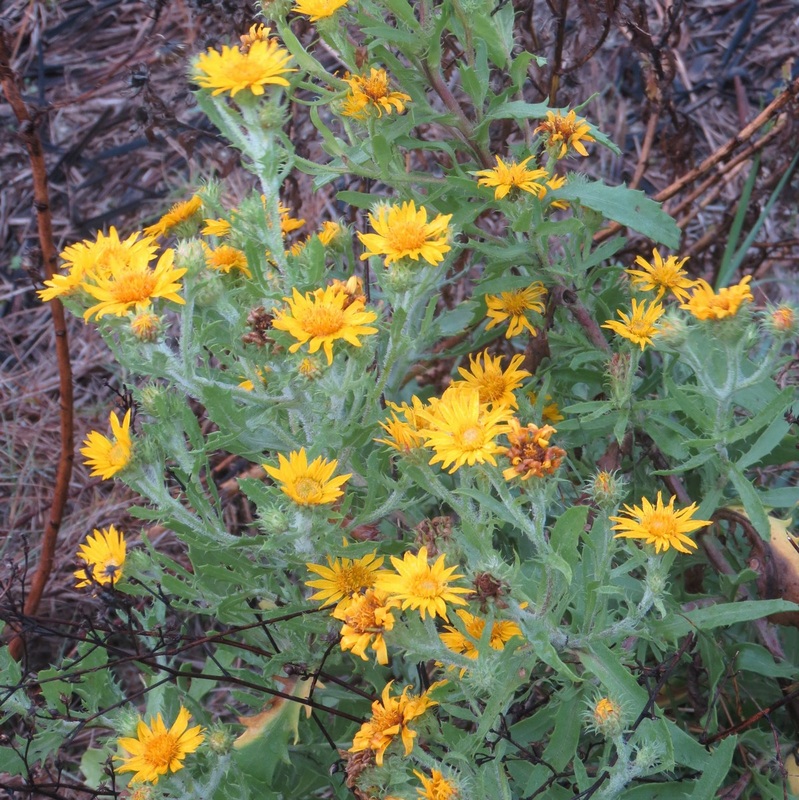
Camphor Daisy is a perennial plant that can reach up to 3 feet in height. It produces bright yellow flowers about 1 inch in diameter and has a characteristic camphor-like scent, especially when crushed. The leaves are feathery and gray-green.
Camphor Daisy is known for its ability to attract a variety of pollinators, including bees and butterflies. It is also an important food source for livestock and wildlife, particularly deer and quail.
- Family: Asteracea
- Common Names: Camphor Daisy
- Native to USA: CO, FL, LA, TX
While Camphor Daisy can be a useful plant in terms of wildlife and pollinator habitat, it is also considered invasive in some areas. It can spread quickly and outcompete native plant species, which can have negative impacts on local ecosystems. As such, it is important to be mindful of its potential invasiveness when planting it in home landscapes.
Rhynchosia latifolia
Prairie snoutbean (Rhynchosia minima) is a native wildflower in the southern United States, including Texas. It is a small annual herb that grows up to 20 inches tall and has green, trifoliate leaves with yellow flowers. The flowers have a long, slender, curved keel that resembles a snout, which gives the plant its common name.
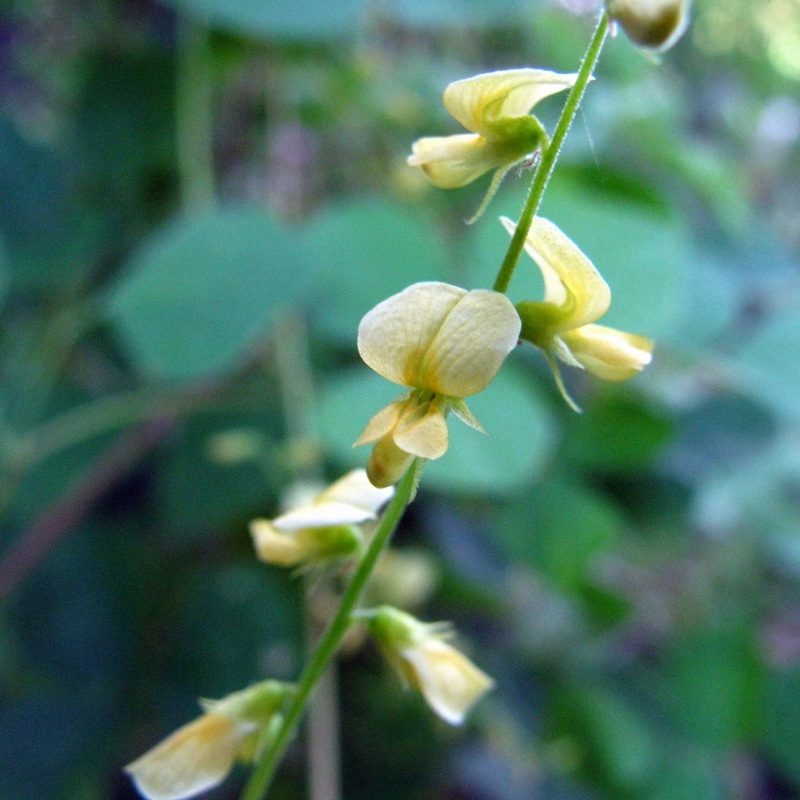
Prairie snoutbean blooms from May to October and prefers sandy or gravelly soils in open fields, prairies, and along roadsides. It is a legume and, like other members of this plant family, it can fix nitrogen in the soil, making it a valuable component of native ecosystems. Prairie snoutbean seeds are a food source for birds, rodents, and other small mammals.
- Family: Fabaceae
- Common Names: Prairie Snoutbean
- Native to USA: AR, LA, MO, MS, OK, TN, TX
Sarracenia alata
Sarracenia alata is a carnivorous plant species in the pitcher plant family, Sarraceniaceae. It is commonly known as the “yellow trumpet” or “yellow pitcher plant“. The plant is native to the southeastern United States, particularly in Texas, Louisiana, Mississippi, and Alabama.

Sarracenia alata grows in acidic soils in wet, boggy areas such as savannas and wet pine barrens. It is a perennial herbaceous plant that typically grows up to 60 cm (24 in) tall. The leaves are arranged in a rosette and form distinctive pitchers typically yellow-green with red veins. The pitchers are filled with a liquid that attracts and traps insects, which the plant digests to obtain nutrients.
- Family: Sarraceniaceae
- Common Names: Flycatcher, Yellow Trumpet, Yellow Trumpets, Yellow Pitcher Plant
- Native to USA: AL, GA, LA, MS, TX
In addition to its carnivorous adaptation, Sarracenia alata is also an attractive ornamental plant and is often grown in bog gardens and other moist environments.
Schoenolirion croceum
Yellow Sunnybells is the common name for Schoenocaulon texanum, a native Texas plant also known as Green Lily or Hierba del Culebra. It belongs to the family Melanthiaceae and is a perennial herb that typically grows to be around 1-3 feet tall. It is commonly found in sandy and clay soils in the eastern half of Texas, particularly in pine forests, woodlands, and prairies.
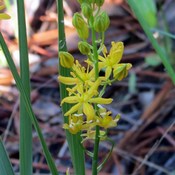
The plant blooms from March to June, producing greenish-yellow flowers that are bell-shaped and grow in clusters at the top of the stem. Bees and other insects pollinate the flowers. After fertilizing the flowers, they give way to small, black, shiny seeds dispersed by wind.
- Family: Liliaceae
- Common Names: Yellow Sunnybells
- Synonyms: Oxytria crocea
- Native to USA: AL, FL, GA, LA, NC, SC, TN, TX
Senna obtusifolia
Java-bean is another common name for Sicklepod (Senna obtusifolia), a weedy plant native to the Americas and found in many other parts of the world. It is a member of the legume family (Fabaceae), and is sometimes called coffeeweed, sickle senna, or sicklepod senna.
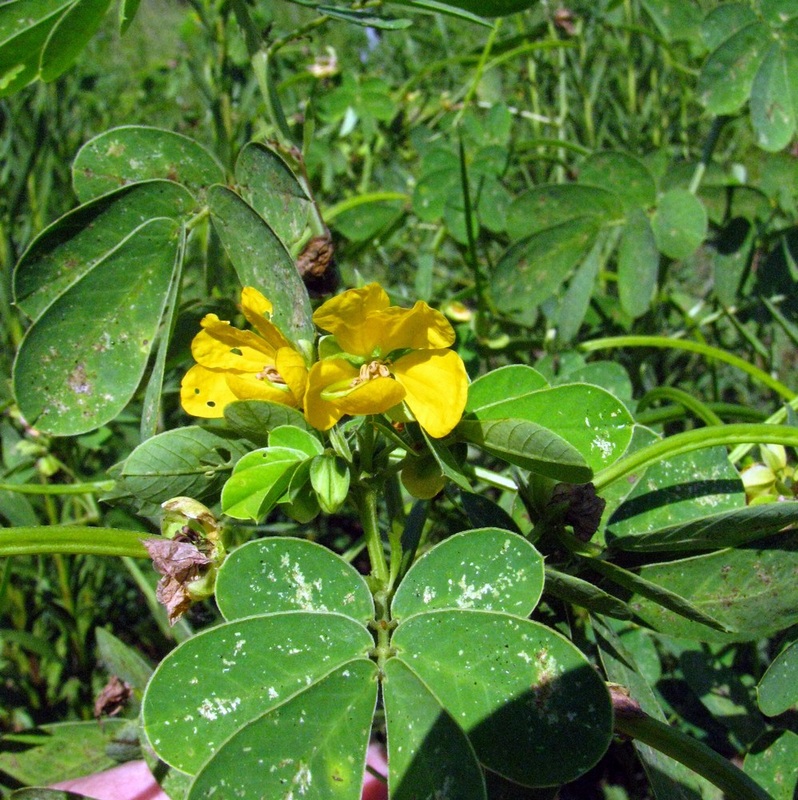
The plant can grow up to 5 feet tall and has compound leaves with up to 8 pairs of oval-shaped leaflets. It produces small, yellow, pea-like flowers in the summer, followed by long, narrow seed pods curved like a sickle. The pods contain several small, oval-shaped seeds that wildlife and some humans use as a food source.
- Family: Fabaceae
- Common Names: Java-bean, Sicklepod
- Native to USA: AL, AR, CA, DE, FL, GA, IL, IN, KS, KY, LA, MA, MD, MO, MS, NC, NE, NJ, NY, OK, PA, SC, TN, TX, VA, WI ,WV + PR, VI
- Introduced to USA: HI
While Sicklepod is sometimes cultivated as a food crop or for medicinal uses, it is often considered a weed due to its invasive nature and ability to outcompete other plants. Its seeds can remain viable in the soil for several years, and the plant can tolerate many growing conditions. As a result, it can be difficult to control once established.
Sesbania drummondii
Sesbania drummondii, also known as rattlebox, rattlebush, or poisonbean, is a plant species in the legume family, Fabaceae. It is native to the southeastern United States, including Texas, and can be found in fields, pastures, and roadsides.

The plant is an annual herb that grows up to 6 feet tall, and has pinnately compound leaves with 15-30 pairs of small leaflets. It blooms from July to September, producing small, yellow flowers in axillary clusters. The fruit is a segmented pod that produces a rattling sound when shaken, giving rise to the common names “rattlebox” and “rattlebush”.
- Family: Fabaceae
- Common Names: Rattlebox, Rattlebush, Poisonbean
- Native to USA: AL, AR, FL, GA, LA, MS, SC, TX
While the plant is attractive and can be used for ornamental purposes, it is also considered a noxious weed in some areas due to its toxicity. The seeds contain the toxin swainsonine, which can cause neurological damage in livestock if ingested in large quantities.
Simsia calva
The Awnless Bush Sunflower, also known as Simsia calva or Bahia calva, is a plant species native to Texas, Oklahoma, and other parts of the southwestern United States.
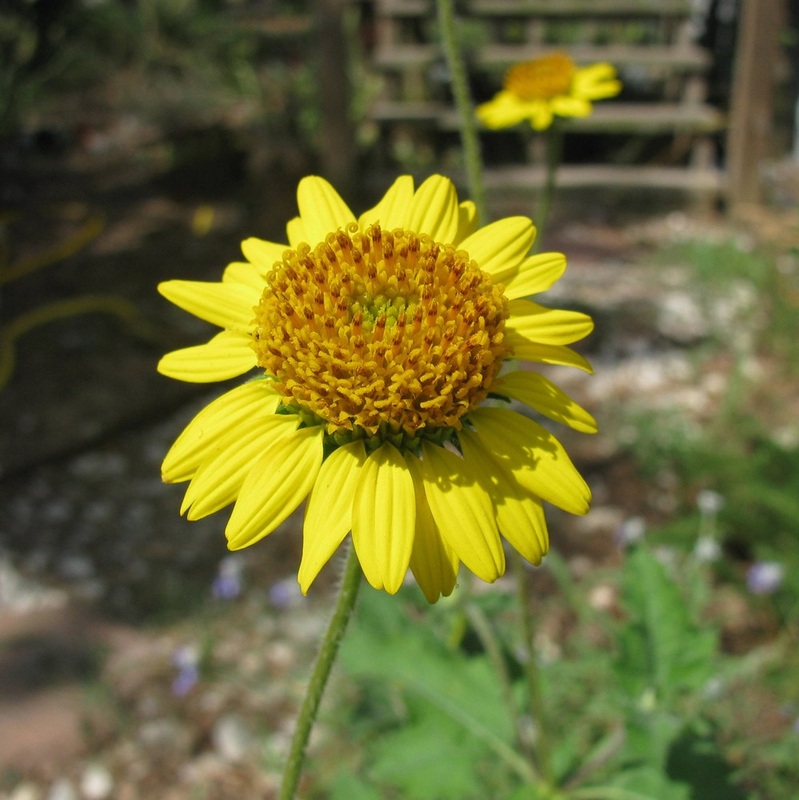
The Awnless Bush Sunflower is a perennial herb that grows about 1-2 feet tall. It has many branches and narrow, oblong leaves that are hairy and serrated. The plant also produces many bright yellow, daisy-like flowers with dark centers, which bloom from late summer to early fall.
- Family: Asteraceae
- Common Names: Awnless Bush Sunflower, Bush Sunflower
- Native to USA: NM, TX
Habitat: This plant prefers dry, open areas such as prairies, meadows, and roadsides. It can also grow in disturbed areas such as pastures and abandoned fields.
Benefits: The Awnless Bush Sunflower is a valuable plant for wildlife, providing food and habitat for insects, birds, and small mammals. It is also a popular ornamental plant for gardens and landscaping due to its bright, cheerful flowers and ease of cultivation. Additionally, the plant has been used in traditional medicine to treat various ailments, including stomach and kidney problems.
Vigna luteola
The Hairypod Cowpea, also known as the Yellow Vigna, is a legume native to Texas and other parts of the southeastern United States. Its scientific name is Vigna luteola.
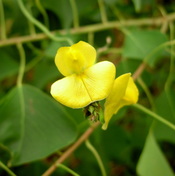
It is an annual plant that can grow up to 3 feet tall and has small yellow flowers that bloom in the summer. The plant produces small, oblong pods that are covered in fine hairs, which is how it got its common name.
- Family: Fabaceae
- Common Names: Hairypod Cowpea, Yellow Vigna
- Native to USA: AL, FL, GA, LA, MS, NC, PA, SC, TX, VA + PR, VI
The seeds are small and round and are often used in cooking, especially in Indian and Southeast Asian cuisine. The Hairypod Cowpea is also used as a forage crop for livestock and is known for its nitrogen-fixing properties, which can help improve soil fertility.

